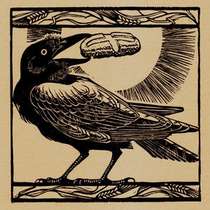 “Saint Benedict” by Br. David Paul Lange OSB – Photo: Mary van Balen Readers of this blog know I have found grace and renewal at Saint John’s Abbey in Collegeville, MN, Saint Benedict’s Monastery in St. Joseph, MN, and the Collegeville Institute for Ecumenical & Cultural Research. The three are closely related not only geographically but most importantly by their roots in Benedictine spirituality, and in the case ofthe monastery and abbey, the Rule of St. Benedict.
“Saint Benedict” by Br. David Paul Lange OSB – Photo: Mary van Balen Readers of this blog know I have found grace and renewal at Saint John’s Abbey in Collegeville, MN, Saint Benedict’s Monastery in St. Joseph, MN, and the Collegeville Institute for Ecumenical & Cultural Research. The three are closely related not only geographically but most importantly by their roots in Benedictine spirituality, and in the case ofthe monastery and abbey, the Rule of St. Benedict.
Benedict’s Rule, while providing stability and orderly creative space to some in the tumultuous times in which he lived, continues to guide many who seek the same today.
In this morning’s Huffington Post, St. Benedict vs Rugged Individualism, by Thomas Worcester, offers thoughts on the Rule’s relevance for current political debates on healthcare and immigration.
Today the Roman Catholic Church celebrates the feast of Saint Benedict, Abbot. I celebrate it, too, rereading some of the Rule, wearing the new St. Benedict Jubilee medal I bought while attending a writing workshop at the Institute last month, and intentionally living the day with the famous Benedictine balance of work, prayer, recreation, and study.
One day this June, while leaving the Abbey church there after morning prayer, I saw buzz of activity around a newly installed statue of Benedict. Sculpted by Br. David Paul OSB, Benedict holds a book and quill and is surrounded by more books and manuscripts. A large raven or crow stands at the saint’s feet. Often thought of as a bad omen or a harbinger of death, the crow has a brighter side, and even has a place on the jubilee medal. In Christian lore it can symbolize Divine Providence, bringing food to saints who, for one reason or another , are spending time alone in deserted places. Elijah, for example. Or Benedict.
Most of what is known about Benedict is found in the second book of the Dialogues of Saint Gregory the Great. In it we read the story of how Benedict, who fed bread crumbs to a crow each day, asked her to take a loaf meant for him that was poisoned by a jealous local priest, and drop it somewhere where no one would find it. The crow hesitated and then obeyed. Upon her return, Benedict fed her as usual.
The story of Benedict and the statue remind me that Divine Providence is not only something bestowed on saints of history, nor is it merely pious legend. God’s care comes to us in countless ways. Sometimes through people who fill our days. Family and friends, prayerful communities and maybe a sales associate at the department store offer concern, hope, and good cheer. Opportunities arise. Formative ideas are found in words written or spoken, in books or movies, in a card or letter. Or email.
 God is Present as always. We may not need rescued from a poisoned loaf, but we can all use support and nurture as we make our way through life. As Thomas Worcester reminds us, we are expected to offer the same support to others.
God is Present as always. We may not need rescued from a poisoned loaf, but we can all use support and nurture as we make our way through life. As Thomas Worcester reminds us, we are expected to offer the same support to others.
This blog post is a “thank you” to my Benedictine friends and the many others who bring God’s grace into my life. It is a challenge to bring Benedict’s commitment to the care and the common good to others. It is also an invitation to hope. Next time you hear a crow’s raspy caw or see the black birds roosting in a tree, remember that God sends sustenance through unlikely messengers.
(Woodcut by Alison Wallace)

Speak Your Mind